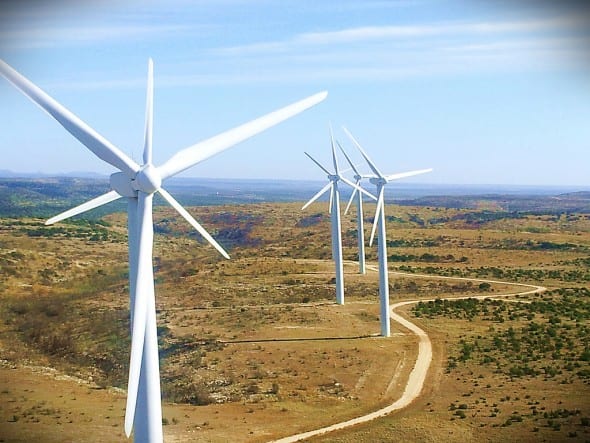One of the world’s biggest industrial energy consumers, American chemical maker Dow, is rapidly joining the ranks of the world’s top buyers and consumers of renewable energy, with the announcement of yet another deal to power more of its manufacturing facilities with 100 per cent renewables.
The latest deal, announced on Thursday by Dow’s Building Solutions unit, will see roughly 10 per cent of its styrofoam insulation production and 50 per cent of its thermax insulation production operated on renewable energy resources.
This follows a separate deal, last week, with NRG Energy and NRG Yield, to power Dow Chemical’s Freeport, Texas facilities through a 10-year wind power purchase agreement from the 150MW Goat Mountain I and II wind farms.

Dow currently supplies its Freeport facilities with 350MW of wind power annually, which is the equivalent amount of electricity needed to power nearly 50,000 homes, or one-third of a modern nuclear plant.
The new partnership with NRG adds an additional 150MW, for a total of approximately 500MW in renewable energy. It has also allowed the company to boost its renewable energy target from 400MW to 750MW, in pursuit of its 2025 Sustainability Goals.
“Dow is proud to be the first company in the United States to power manufacturing sites with renewable energy at this kind of scale and that we’ve become one of the largest corporate purchasers of wind energy in America,” said said Dow’s corporate vice president and chief sustainability officer Neil Hawkins in s statement last week.
“We appreciate this new collaboration with NRG at our Freeport site.”
Dow’s president of feedstocks and energy, Jack Broodo, described the NRG deal as a “game changer” for a big industrial that used to rely on grid power, fossil fuels, natural gas, coal and oil to power its plants.
“Through cost-advantaged power, Dow is manufacturing materials through renewable energy in one of the largest-scale industrial partnerships in the world,” he said.
Seth Roberts, Dow’s global business director of the Energy and Climate Change portfolio, said adding large-scale renewables to the company’s manufacturing process was just one smart move it could make to secure a future of sustainability, growth, and long-term competitive advantage.
“This decision also serves as a systemic hedge against both energy and power price volatility, while improving our overall carbon footprint,” Roberts said.
Of course, as the chart below by RE100 illustrates, Dow is not the only major corporation to tap into the multiple benefits of renewable energy.

As Quartz.com reported last week, companies across the world are voluntarily signing up to source up to 100 per cent their power from renewable sources, either by buying it from established providers (Mars this week signed a deal with a Scottish wind farm that makes it 100 per cent renewable in the UK), or by building their own wind farms and solar arrays.
It should be noted that Google – the world’s biggest corporate purchaser of renewable power, with a target of 100 per cent – is not in the chart because the search engine giant doesn’t put its data in the public domain. Nor is Facebook, which is aiming for 50 per cent renewables by 2018.








